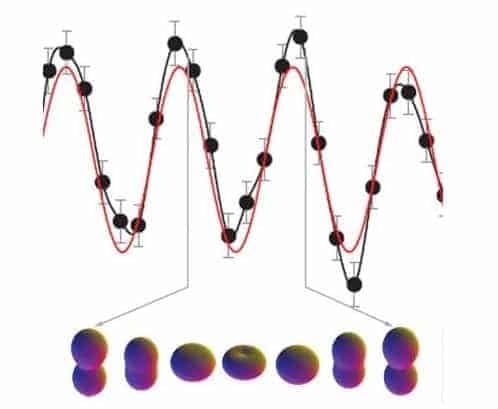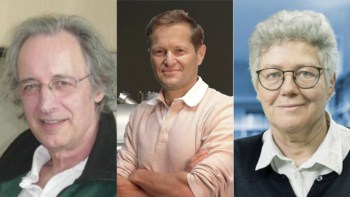
Researchers in Germany and the US have used flashes of laser light to follow the motion of valence electrons as they are excited and ejected from atoms of krypton. They say that their technique could lead to the control of chemical reactions by steering the motion of individual electrons, allowing, for instance, the speeding up of photosynthesis.
Capturing motion at the atomic scale in general requires the use of “pump-probe” techniques, with one pulse of light initiating the movement and a second, delayed, pulse then taking a series of snapshots. This approach has already been used over timescales of just a few femtoseconds (10–15s) to follow the movement of atoms inside molecules or crystals, allowing the observation of the formation and rupture of chemical bonds in real-time. However, tracking the motion of valence electrons, the outermost electrons in an atom and those that affect an atom’s chemical properties, requires taking snapshots over even shorter periods of time – of the order of attoseconds, or 10–18s.
Research with krypton factor
This has now been achieved by a team led by Eleftherios Goulielmakis of the Max Planck Institute of Quantum Optics in Germany, who – adapting a technique previously used to study femtosecond atomic movement – fired femtosecond infrared laser pulses into a chamber containing krypton gas in order to ionize the atoms in the gas. They then probed the evolution of this ionization using ultraviolet pulses, each lasting around 100 attoseconds, which they directed along the same path through the krypton.
Each electron that is removed by the infrared pulses leaves a hole in the outer shell of its atom. This hole can then be filled when one of the ultraviolet pulses excites an electron from closer to the atom’s core into the vacancy. And it is this absorption of the ultraviolet pulse that provides the information about the motion of the valence electrons of the ion.
By progressively extending the delay between the infrared pump and the ultraviolet probe and recording how the absorption of the probe varies as a result, the researchers were able to track the evolution of the phase of the hole. Goulielmakis explained that tracking the motion of electrons around an atom means calculating the evolution of the wavefunction that describes the probability of those electrons being in a particular place at a particular time. This calculation requires knowledge of the energy of the electronic levels involved, their populations and their relative phase. With spectroscopy providing values for the first two quantities, the absorption of the attosecond pulses completes the picture.
Controlling plant growth
According to Goulielmakis, this technique could have a wide range of applications, including the study of systems that lose electronic coherence when they interact with their environment, such as condensed-matter systems. He also believes our understanding of photosynthesis could be improved, because the attosecond snapshots would provide a much higher resolution view of the way in which electrons are removed from water molecules and used to power reactions that turn carbon dioxide into organic compounds such as sugar. Indeed, he says it might be possible one day to steer electron motion with light and in so doing control the speed of photosynthesis. “This is speculation,” he adds, “but I’m sure that it will happen one day.”
Christoph Lienau of the University of Oldenburg in Germany, who was not part of the research team, describes the work as “an important breakthrough in our ability to observe microscopic processes”. He hopes that the technique can be developed for use in systems that are more complex than single atoms, such as molecules or the kind of solid-state nanostructures being proposed for use in solar cells.
This research is described in a paper in Nature.


